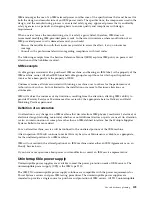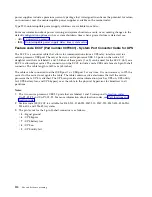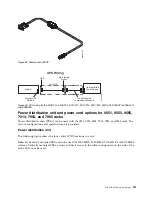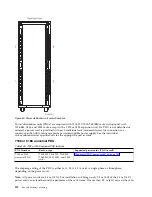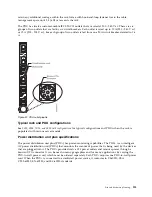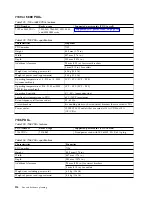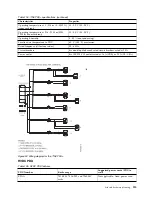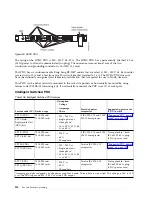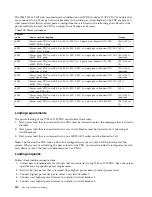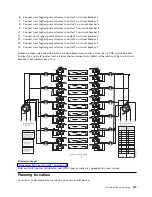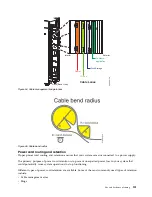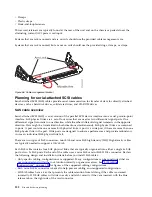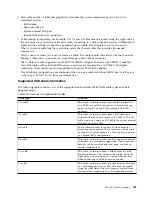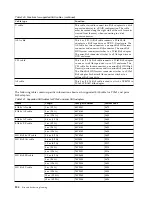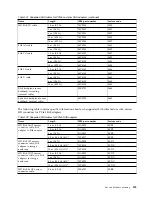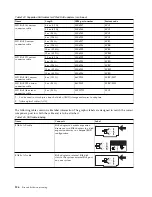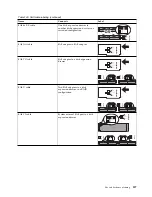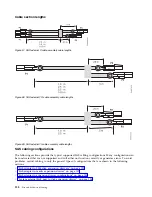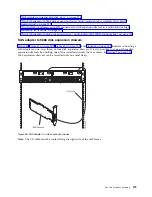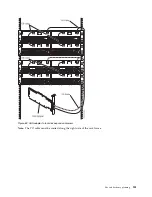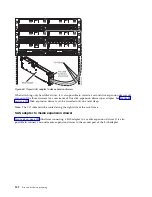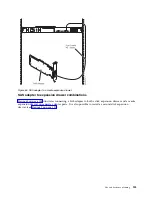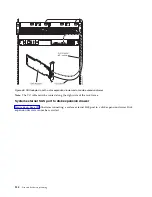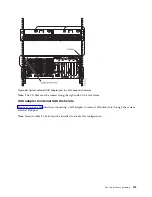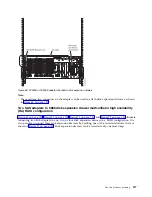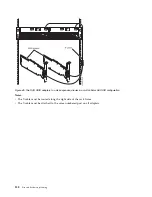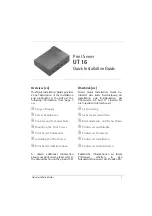
v
Each cable end has a label that graphically describes the correct component port to which it is
connected, such as:
– SAS adapter
– Expansion drawer
– System external SAS port
– Internal SAS disk slots connection.
v
Cable routing is important. For example, YO, YI, and X cables must be routed along the right side of
the rack frame (as viewed from the rear) when connecting to a disk expansion drawer. Additionally, X
cables must be attached to the same numbered port on both SAS adapters to which it connects.
v
When a choice of cable lengths is available, select the shortest cable that provides the needed
connectivity.
v
Always use care when you insert or remove a cable. The cable should slide easily into the connector.
Forcing a cable into a connector can cause damage to the cable or connector.
v
The X cables are only supported on all SAS PCI (RAID) adapters and only when RAID is enabled.
v
New SAS cables with mini-SAS HD narrow connectors are required for any PCIe3 SAS adapter
connection. These cables are also compatible with earlier PCIe2 SAS adapters.
v
Not all cabling configurations are supported when you use solid-state drives (SSD). See Installing and
configuring Solid State Drives for more information.
Supported SAS cable information
The following table contains a list of the supported serial-attached SCSI (SAS) cable types and their
designed usage.
Table 140. Functions for supported SAS cables
Cable type
Function
AA cable
This cable is used to connect between the top ports on
two PCIe2 tri-port SAS adapters or to connect the top
one or two ports on two PCIe3 caching SAS RAID
adapters.
AI cable
This cable is used to connect from a SAS adapter to
internal SAS disk slots that uses an FC 3650 or FC 3651
cable card, or by using an FC 3669 to the system external
SAS port on your system.
AE cable
These cables are used to connect a SAS adapter to a
media expansion drawer. These cables can also be used
to connect two SAS adapters to a disk expansion drawer
in a unique JBOD configuration.
EE cable
This cable is used to connect one disk expansion drawer
to another in a cascaded configuration. Disk expansion
drawers can be cascaded one level deep, and only in
certain configurations.
YO cable
This cable is used to connect a SAS adapter to a disk
expansion drawer. The cable must be routed along the
right side of the rack frame (as viewed from the rear)
when connecting to a disk expansion drawer.
YI cable
This cable is used to connect a system external SAS port
to a disk expansion drawer. The cable must be routed
along the right side of the rack frame (as viewed from
the rear) when connecting to a disk expansion drawer.
Site and hardware planning
123
Summary of Contents for 8408-44E
Page 1: ...Power Systems Site and hardware planning IBM...
Page 2: ......
Page 3: ...Power Systems Site and hardware planning IBM...
Page 16: ...xiv Site and hardware planning...
Page 18: ...2 Site and hardware planning...
Page 22: ...6 Site and hardware planning...
Page 51: ...Figure 19 Model 0555 and 7014 S25 plan view Site and hardware planning 35...
Page 192: ...176 Site and hardware planning...
Page 204: ...188 Site and hardware planning...
Page 205: ......
Page 206: ...IBM Printed in USA...

